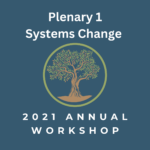By Mehul Savla ([email protected]) and Sahdia Khan ([email protected])
Catholic Relief Services’ (CRS) Homes and Communities (H&C) approach is committed to ensuring safe, dignified H&C through direct humanitarian service provision for 1.5 million crisis-affected people by 2030. In addition, CRS aims to influence governments, markets, humanitarian, and development actors so they take up innovations and good practices thus enabling 8.5 million affected people indirectly to access safe and dignified H&C by 2030.
Loss of home and internal displacement are common in Bangladesh due to natural hazards. The country is heavily prone to earthquakes, cyclones and floods, and the situation is worsening with climate change. Most relief efforts remain short-term, without addressing the longer-term housing needs of affected people or the underlying causes of unsafe housing conditions. Additionally, Bangladesh is hosting 909,000 Rohingya refugees and stateless persons who need shelter in the camps. CRS’ approach to H&C addresses the humanitarian needs in the camps and underlying systemic causes that bring about destruction.
CRS’ approach focuses on strengthening local organizations, on-the-ground first responders who can take shelter and housing solutions to scale. One of these local organizations is Caritas Bangladesh, which is working in partnership with key Government departments, Bangladesh University of Engineering and Technology, and a variety of other local actors to influence government policies, and to replicate innovations at scale. The first scaling-up occurred through Caritas’ network. To date it has supported more than 400,000 households with shelter assistance across Bangladesh and construction of 246 Multi-Purpose Cyclone Evacuation Shelters, thus enabling more than 250,000 persons to evacuate safely in the frequent cyclone seasons.
Caritas’ experience scaling-up Multi-Purpose Shelters demonstrates how these hazard shelters can be sustained by the local communities providing vocational training with a certified curriculum near the communities. Another level of scaling-up is likely to occur through peer agencies that are engaged in disaster preparedness, evacuation, rescue, and relief such as the local Red Cross whose volunteers can support 3,268 shelters through a network that spans the country. Ultimately, through gradual scaling and demonstration with influential partnerships, the aim is to institutionalise the guidelines for training local youth on operation and maintenance of Multi-Purpose Shelters through the Ministry of Disaster, Relief and Rehabilitation and to strengthen the capacity of the Disaster Management Committees closest to the communities. This gradual process will allow to bake-in resilience in the local disaster preparedness system in a sustainable manner.
For more information contact Mehul Savla ([email protected]) and Sahdia Khan ([email protected]), respectively H&C manager CRS Bangladesh and H&C Strategic Change Platform Global Coordinator.


